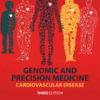Genome Stability From Virus to Human Application Volume 26 in Translational Epigenetics 2021 Original pdf
$12
Genome Stability From Virus to Human Application Volume 26 in Translational Epigenetics 2021 Original pdf
Genome Stability: From Virus to Human Application, Second Edition, a volume in the Translational Epigenetics series, explores how various species maintain genome stability and genome diversification in response to environmental factors. Here, across thirty-eight chapters, leading researchers provide a deep analysis of genome stability in DNA/RNA viruses, prokaryotes, single cell eukaryotes, lower multicellular eukaryotes, and mammals, examining how epigenetic factors contribute to genome stability and how these species pass memories of encounters to progeny. Topics also include major DNA repair mechanisms, the role of chromatin in genome stability, human diseases associated with genome instability, and genome stability in response to aging.
This second edition has been fully revised to address evolving research trends, including CRISPRs/Cas9 genome editing; conventional versus transgenic genome instability; breeding and genetic diseases associated with abnormal DNA repair; RNA and extrachromosomal DNA; cloning, stem cells, and embryo development; programmed genome instability; and conserved and divergent features of repair. This volume is an essential resource for geneticists, epigeneticists, and molecular biologists who are looking to gain a deeper understanding of this rapidly expanding field, and can also be of great use to advanced students who are looking to gain additional expertise in genome stability.
Related Products
Basic Sciences Books
Basic Sciences Books
Messenger RNA Therapeutics (RNA Technologies, 13) (Original PDF from Publisher)
Genetics Books
Genetics Books
Genetics and Neurobiology of Down Syndrome 2022 Original PDF
Genetics Books
Genetics Books
Genetics Books
Genetics Books
Genetics Books
DNA Damage Responses Methods and Protocols 2022 Original pdf
Genetics Books
Genetics Books
Genetics Books
Genetics Books
Genetics Books
Epigenetics of Stress and Stress Disorders 2022 Original PDF
Genetics Books
Genetics Books
Genetics Books
Genetics Books
Neuropsychiatric Disorders and Epigenetics 2017 Original pdf
Genetics Books
Genetics Books
Genetics Books
Genetics Books







































































































